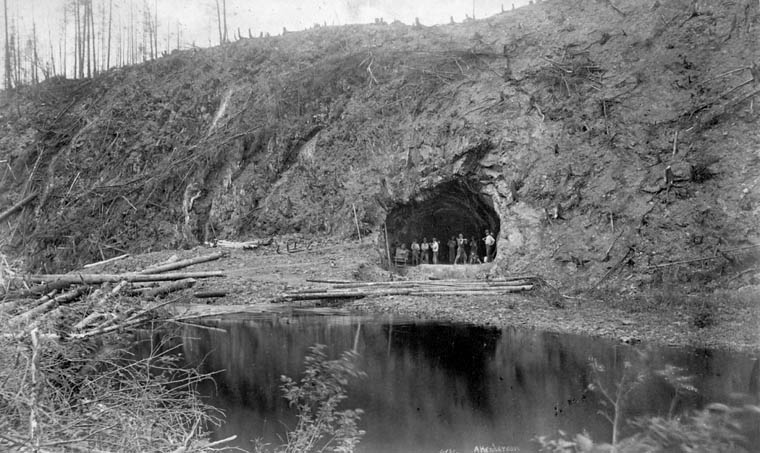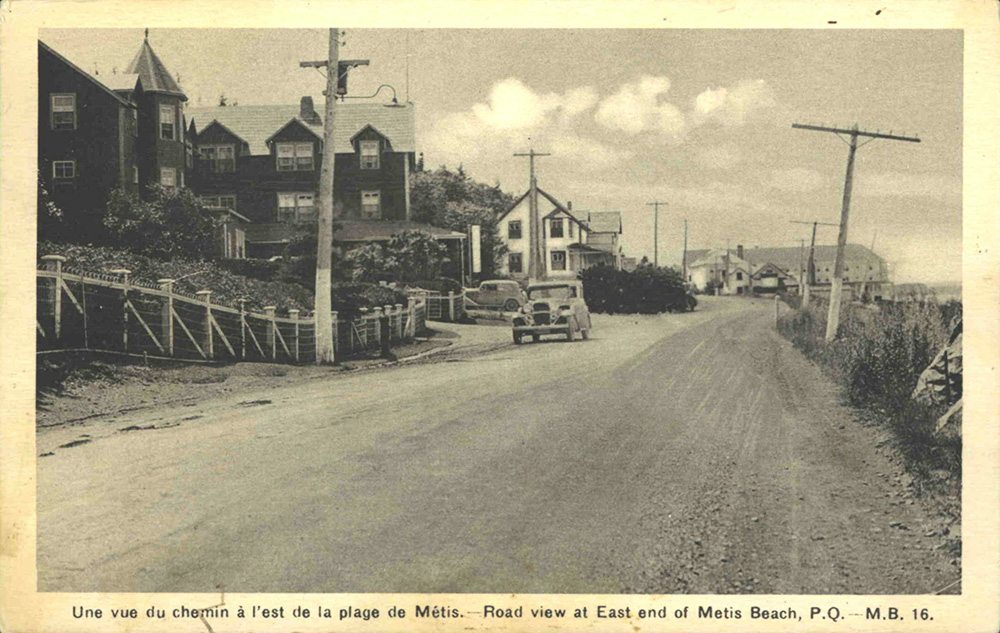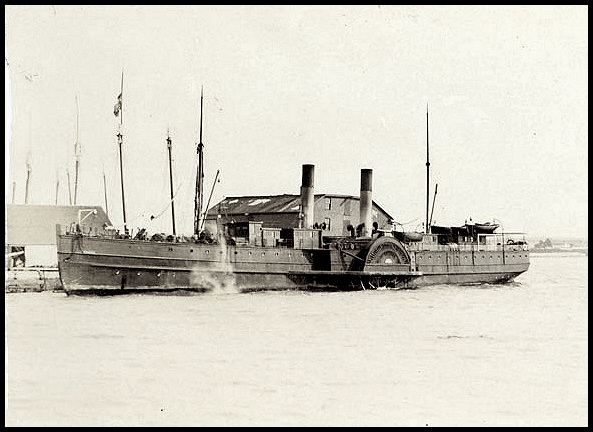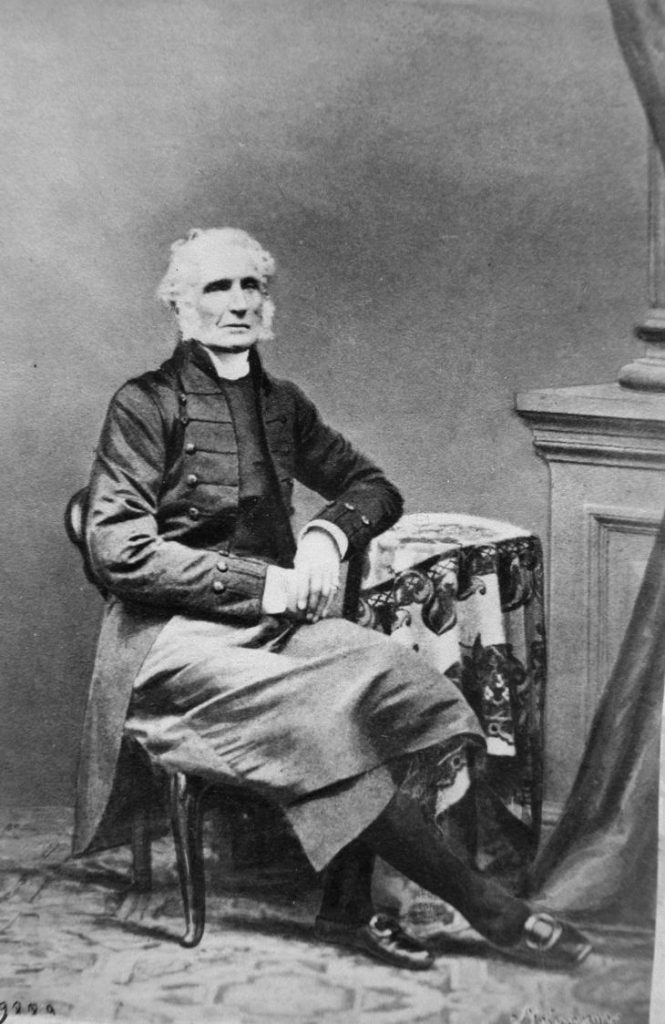Getting There – Getting to Metis on Foot, by Boat, Train, Plane and Car
Getting there is half the fun. In the 19th century, travellers made their way to Metis by foot and on snowshoes, by horse and buggy, steamship and train. Occasionally, other modes of transport, like sailboats, yachts and bicycles were used. Travelling to Metis is a mirror of the history of transportation in eastern Canada.
Metis is a far distant destination. Located 600 km (380 miles) from Montreal, the shoreline village was once difficult to reach whatever the mode of transportation. The construction of the railway changed everything. So did the highway.

This photograph of the workers in the diversion tunnel for the Tartigou River was taken by Montreal photographer Alexander Henderson, contracted by the Intercolonial Railway to chronicle its construction in 1871-1872.
The 20th century brought improvement to roads, allowing automobiles to make their way to Metis on a bumpy and dusty highway. The community went from being a charming but distant destination to one that was much less remote. The construction of an airport during World War II brought air transportation to the front door of the region. Air travel provided connections to the world, introducing Metis to global travelers from all over. Families from as far distant as Vancouver and Amsterdam have made Metis their summer home.

The new Gaspé Highway traversed Metis Beach. Visitors sent home postcards proudly announcing the start of an epic road trip of more than 550 miles of shoreline driving.
Tales of travel to Metis are legion. Told in private journals and published articles, they illustrate both the terrific challenges travellers faced when making their way to Metis and the unique allure of the shoreline hamlet that would draw so many from so far.



